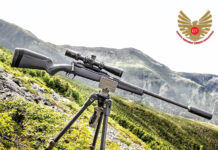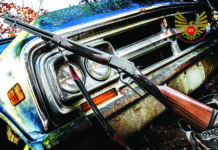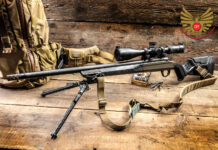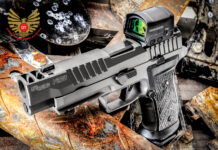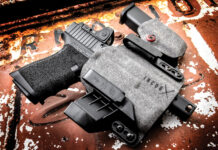At the range or hunting, big 82mm front glass is an asset in a spotter. Its high resolution “pulls apart” tiny objects that appear blurred or joined to the naked eye. Big glass also means a big exit pupil. A common measure of light transmission, exit pupil is the number you by get dividing magnification into the objective lens diameter in millimeters. An exit pupil of 5mm, adequate in most shooting light, is easy to achieve in binoculars and rifle-scopes. But not even the biggest objectives can deliver that in high-power spotters. You won’t notice a small exit pupil until ambient light grows very dim.

Variable power is a must in spotters. At the low end, you’ll pick up valuable light, and also find a target fast. Then you can dial up, if need be, to see detail. On the range, 30x can help you see bullet holes far off. Even 40x can be useful at times. A breeze that will barely lift an aspen leaf will make a 50x or 60x image vibrate off the Richter scale. The low end of a 20-60x power range is more useful than the top end.
At $1,899, this Trijicon isn’t cheap. But image quality compares with that of spotting scopes costing much more. Intelligently designed and easy to use, it’s earned a spot in my kit for an upcoming rifle match.

Mind the Triangle!
Magnification helps us see detail. It is one side of an “optical triangle.” The other two are eye relief and field of view. Change one, and you affect the others. Boosting power shrinks eye relief and reduces the diameter of the light beam reaching your eye—the exit pupil. High magnification atop a sturdy tripod is a blessing on the range. In the field, the lowest useful power is generally best, at least until conditions compel you to boost magnification. Dialing down the power until you need more is smart with any field optic: rifle scope, binocular or spotting scope.


